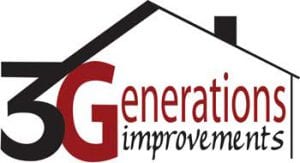Take a look at this very well thought out article from the great Jim Cory about the battle between James Hardie fiber cement and engineered wood siding. I could not have said it better myself. The battle between Hardie and LP has reached a fever pitch in our Northern California market as well. We have noticed a disturbing trend through the years with this battle – contractors become either Hardie guys or LP guys, instead of siding contractors. They know what they are going to sell before they even see the house, even if that is not what is best for that home and that homeowner. If I was a homeowner, I would want at least 2 siding options to choose from, but most contractors only carry one siding type, one siding brand and one sample. This is crazy to us and has become a huge disservice to homeowners. I now see contractors installing James Hardie fiber cement siding on mobile homes! Part of this reason is manufacturer’s are attempting to control their customers by offering rewards/awards for those who sell their product only and punish those who sell their competitor (see more details about this here).
At 3 Generations Improvements, we look at each house and its individual needs before we make a recommendation to a client. Why? Because we do not allow any manufacturer to control what we sell. We sell LP SmartSide, James Hardie or Allura fiber cement, cedar, redwood, T1-11, vertical siding, shakes, aluminum and steel, insulated vinyl siding and much much more! Even though we are punished by manufacturers for this strategy (less leads, support and ultimately sales), we will not cave in because we are siding contractors that truly want to do what is best for our clients, not just our pocket books! Most of our competitors are not siding contractors, they are Hardie contractors or LP contractors. Contact us if you want a true siding expert because that is what you deserve and that is what you should expect!
The Battle of Lap Siding
As engineered wood siding products gain traction in some markets, competitors push back
November 29, 2018
A recent report by the Freedonia Group, a collaboration of market research companies, notes that while vinyl remains the market leader nationally, it has steadily lost share to other materials “that are seen as more aesthetically pleasing,” such as fiber cement, stucco, and wood.
Wait. Did they say wood? Make that engineered wood, which is a serious enough player that another market research company, Principia Consulting, talks about the “hotly contested share battle in lap siding between vinyl, fiber cement, and engineered wood.”
Old Wood, New Wood
Engineered wood siding made by companies such as LP SmartSide, TruWood, or Canadian manufacturer KWP Products may seem like the new kid on the block, but the product’s been around for decades. What one expert calls “a legacy issue” is a reason why it’s not considerably more popular.
In 1996, Louisiana-Pacific (LP) settled a class action lawsuit, paying out more than 129,000 claims arising from issues having to do with Inner-Seal, an OSB-based engineered wood siding the company introduced in 1985. Plaintiffs argued it was susceptible to water infiltration and subsequently rot. Rather than abandon the market, LP went back to work and in 1997 came out with LP SmartSide.
Aiming to deliver a natural product without natural flaws such as knotholes, makers of engineered wood siding have found a place in some regional markets as a serious alternative among higher-end products, especially fiber cement.
Pros And Cons
To produce engineered wood siding, manufacturers coat wood fibers or strands with wax for water resistance; add binding ingredients; and hard-press the material into planks, panels, shakes, and trim. Zinc borate wards off termites and fungal decay, both of which can be a problem for “real wood” siding.
What engineered wood offers, say makers of the product, is the look without the hassle, along with other advantages, such as its ability to hold coatings. To North Carolina contractor Brent Taylor, owner of O.C. Taylor, in Raleigh, N.C., engineered wood and fiber cement are two different ways to achieve low-maintenance results. “There are pros and cons to just about any product,” Taylor says, “and my job is to educate clients to make the most informed decision possible.”
Five years ago, Taylor installed mostly fiber cement. Today, he estimates he uses engineered wood in 95% of siding replacement jobs. Taylor became intrigued by engineered wood when he attended a presentation by his fiber cement siding supplier that, he recalls, disparaged “this problematic, rotting, swelling engineered wood product.”
He decided to check it out for himself and arranged to tour an engineered wood production facility. Intending to “have more ammo to use against engineered wood” when selling, he instead walked away a believer in the product.
Lightweight, Attractive, Easy To Use
One big attraction, to Taylor and others, is ease in handling. Engineered wood, after all, is still wood. It can be cut with conventional saws using conventional blades. Several contractors with experience using both fiber cement and engineered wood say it installs about 20% faster. Numerous cuts are required, as with fiber cement, but panels are not only lighter, they’re typically longer—16 feet, rather than 12 feet—making for fewer seams and less waste.
It’s also more pliant. “You can carry a 16-foot piece and flop it around all you want,” says Pat Quarve, co-owner of Quarve Contracting near Minneapolis. He recently finished a multi-family project using engineered wood siding. Reduced weight and density make the panels easier not only to handle but also to cut.
For instance, in designing the exterior renovation of a 1907 Victorian, Minneapolis architect Marc Sloot, of SALA Architects, chose LP SmartSide to replace the existing fiber cement. The goal was to restore the look to period by replicating the original wood plank siding, a small percentage of which remained under the porch.
Engineered wood was specified not only because it could easily be run through a table saw and cut to identical profile, Sloot says, but also because it’s durable, holds paint well, and has a good price point. “My expectation is that engineered wood is going to require less maintenance, that it’s going to be a little more stable and hold paint longer,” Sloot says. “We have a tough climate here and we’re always looking for materials that are going to be really durable.”
Apart from Minnesota’s cold winters, there’s the fact that the Upper Midwest as well as South Central states, have, in the last few years, experienced more large storms, of greater strength. That’s made impact resistance and longevity key characteristics when specifying a product. “When I talk to homeowners about LP SmartSide, there are a few points I like to touch on,” says Kyle Miller, senior project consultant at All Around, a Minneapolis exterior contractor. “The look of real cedar, the versatility of the trim, and the fact that they’ve tested their products in the most extreme environments on earth” have made engineered wood the company’s preferred siding product, according to Miller.
Potential Health Issues
Some contractors are also concerned about the silica dust that results from cutting fiber cement with a power saw. In 2016 OSHA issued a new standard for acceptable levels of silica particulate, i.e., what goes into the air, and workers’ lungs, when cutting cement. “Using a handheld circular saw to cut fiber-cement board can generate respirable crystalline silica dust,” an agency Fact Sheet notes. “When inhaled over time, the small particles of silica can irreversibly damage the lungs.”
The same year, OSHA introduced a new standard for Permissible Exposure Limits to silica particulate in the workplace: from 250 ug/m3 to 50 ug/m3 over an 8-hour, time-weighted average. The new rules took effect on June 23, 2017, and enforcement began on September 23, 2017. The new standard requires a reduction in the amount of silica in the air by 80%. To achieve that, the agency recommended use of a vacuum dust collection system. (For a list of safety requirements, see this compliance checklist.)
The silica issue has made a difference to contractors who work with the product day in and day out. Homebuilder and remodeler Mike Schwartz, owner of Schwartz Construction in Pierce County, Wash., describes himself as “one of the old dinosaurs that actually builds the houses.” He says he doesn’t like “breathing in all that concrete dust. Sawdust is a little bit better for you.”
A long-time devotee of engineered wood—“I was building when all that crappy stuff was out there, but it’s all gone”—Schwartz says that engineered wood manufacturers “learned they had to build a better product” and did so.
Installation Still Decisive
Makers of fiber cement have hit back, arguing that all wood siding products share the same problems (see “The Ugly Truth About Engineered Wood Siding,” a video from manufacturer James Hardie on the benefits of fiber cement). But aesthetic attraction at comparable price points, along with what Quarve calls “workability,” have boosted the popularity of engineered wood with contractors and installers in the Twin Cities. “You talk to any of the subs,” Quarve says, “they would definitely rather do engineered wood. It’s easier to cut.”
Since both products have their strengths, a good job comes down to installation practices. Four years ago Reuben Saltzman, a second-generation home inspector who writes a home improvement column for the Minneapolis StarTribune, published a guest blog titled “Siding Wars,” in which local contractor Ryan Carey discusses the pros and cons of engineered wood and fiber cement.
About a year later, Saltzman revisited the topic of engineered wood, advising homeowners and contractors that while he remained a fan of the product and had never had a reason not to be, he was also seeing “installation errors on nearly every home I inspect.” He proceeded to document, with photographs, the most common types. “If the product fails as a result of improper installation,” he reminds readers, “the manufacturer will not cover repairs.”


